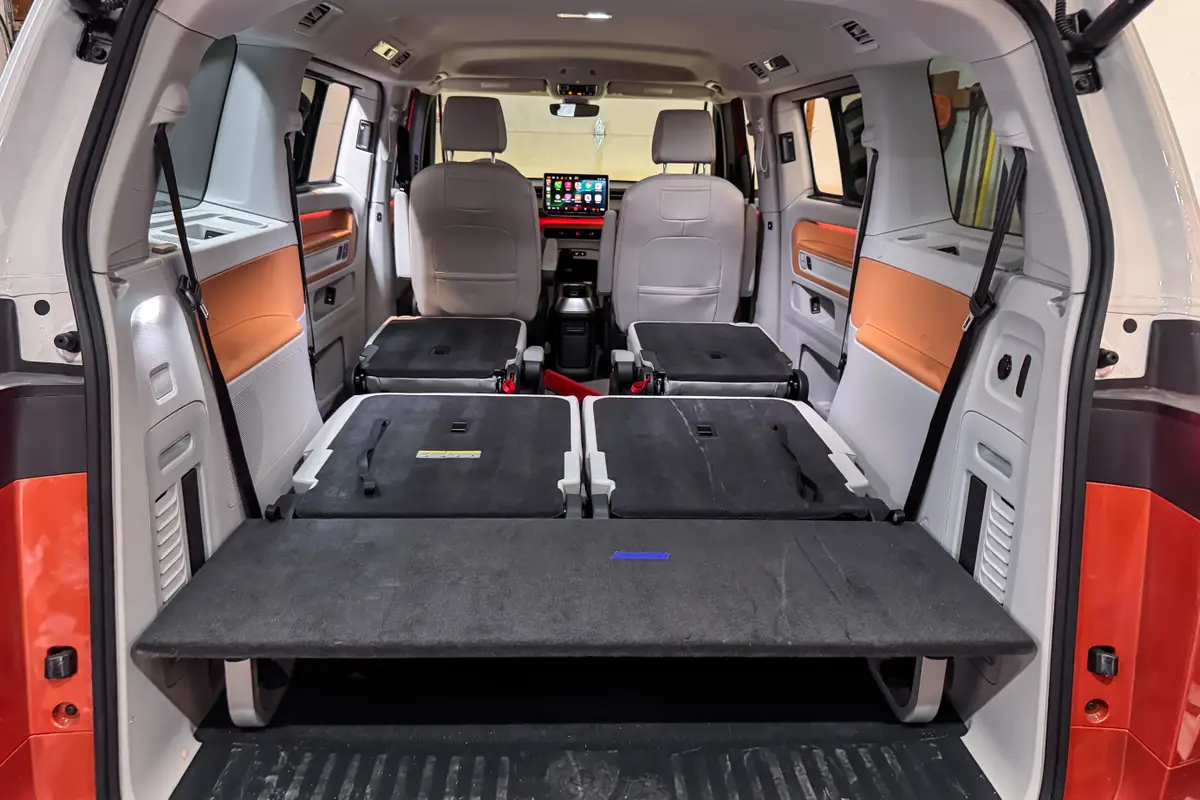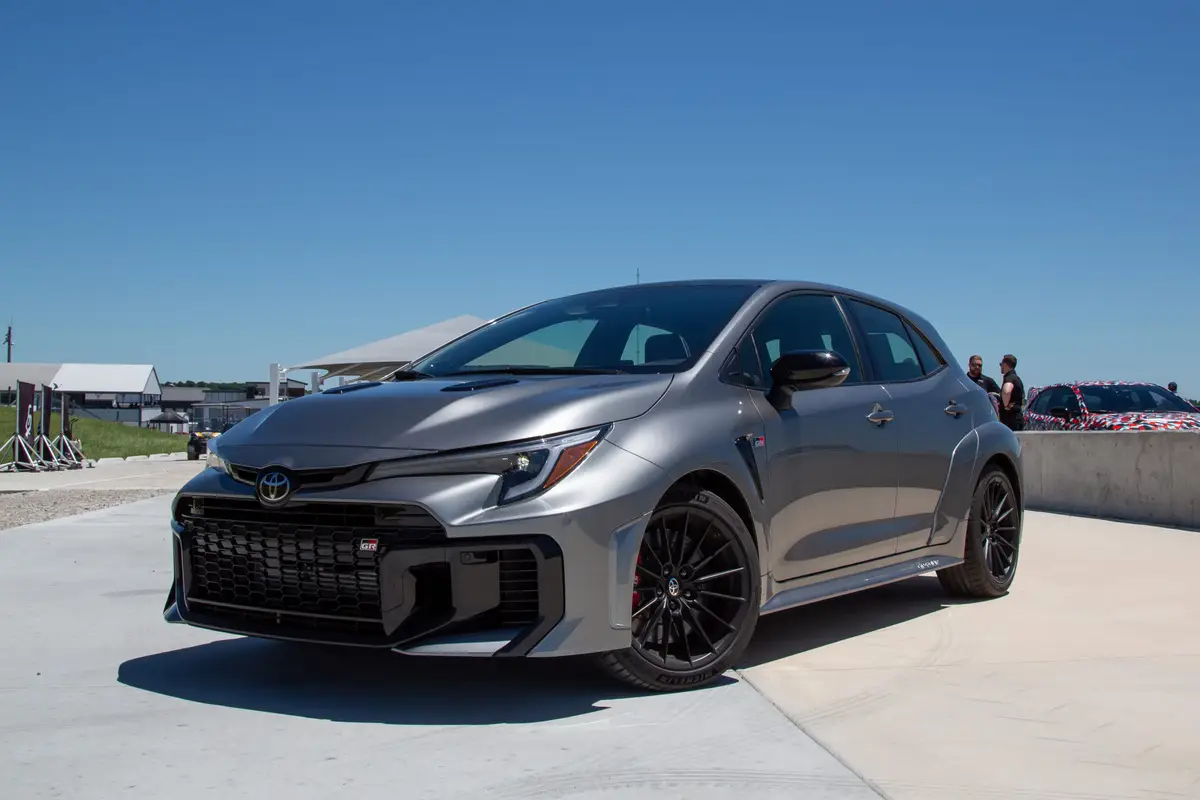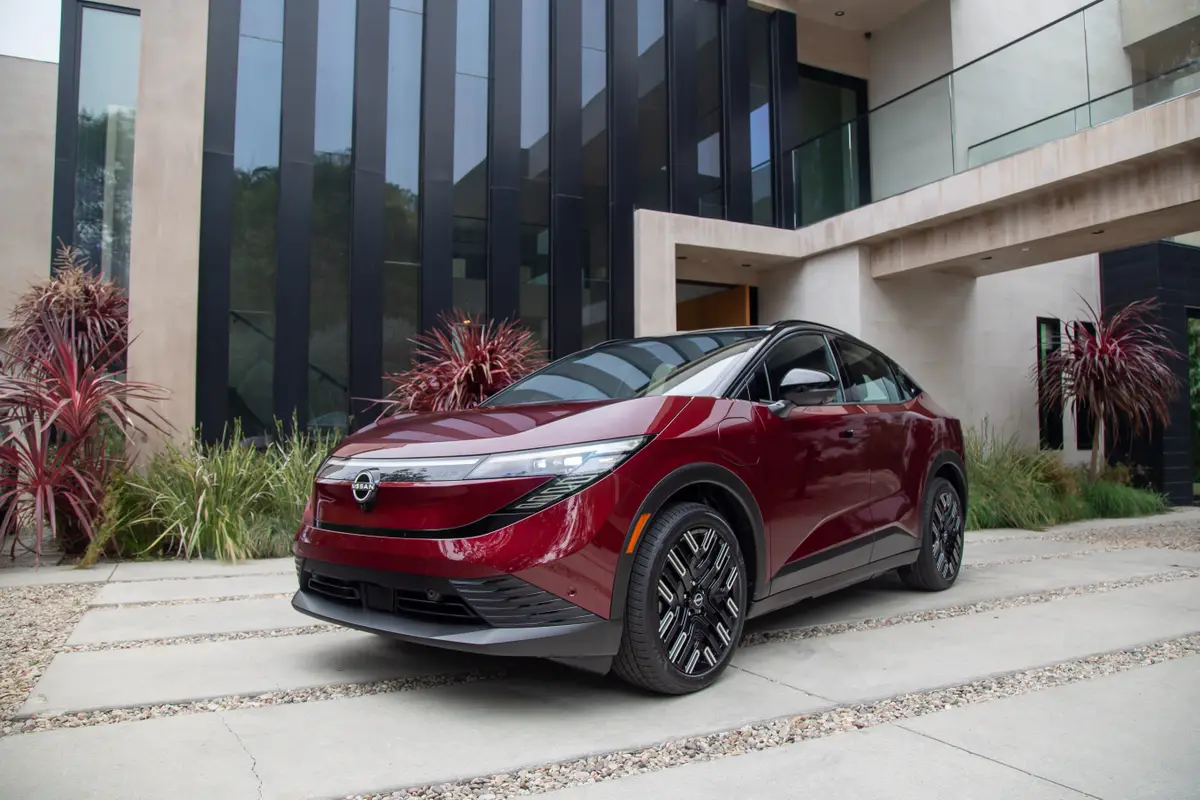2014 Jeep Wrangler Unlimited: Car Seat Check

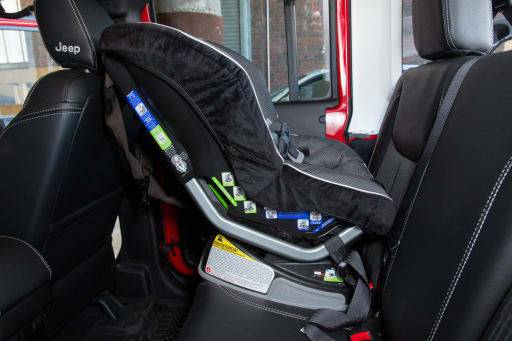
With its rear doors and an additional 1.6 inches of rear legroom, the Jeep Wrangler Unlimited seems like it’s the family-friendly version of the smaller Jeep Wrangler. However, the Wrangler Unlimited’s looks are deceiving. The Unlimited’s bottom backseat cushion was nearly too short to properly fit our rear-facing infant seat’s base; at least 80 percent of any car-seat base should be on the seat cushion.
How many car seats fit in the second row? Two, but three car seats nearly fit.
What We Like
- The Wrangler Unlimited has two sets of lower Latch anchors in the outboard seats; in both seats, the anchors closest to the middle seat sit just inside the seat cushions, while the outer anchors (nearest the doors) are exposed. Three tether anchors are easily found at the base of the seatbacks.
- Both the rear- and forward-facing convertibles installed easily into the Wrangler Unlimited.
What We Don’t
- To fit the rear-facing infant seat, we had to move the front passenger seat forward a couple of inches. The 5-foot-8 tester’s knees were a half-inch from touching the glove box. With the rear-facing convertible, we also had to adjust the front passenger seat forward; the tester had about an inch of space between her knees and the glove box. The Wrangler Unlimited’s upright dash design allowed our tester more knee room than normally found in cars.
- The rear head restraints for the outboard seats are large and fixed in place. When the seats are folded forward, the head restraints are hinged so they move backward, but there’s no way to adjust them when the seat is in the upright position. The fixed head restraint pushed the forward-facing convertible forward on the bottom seat cushion, but not enough to impact the car seat’s installation.
- The seat belt buckles caused problems with our booster seat installation. The floppy buckle kept falling behind the booster seat base, which will cause big problems for a child trying to buckle up on his or her own.
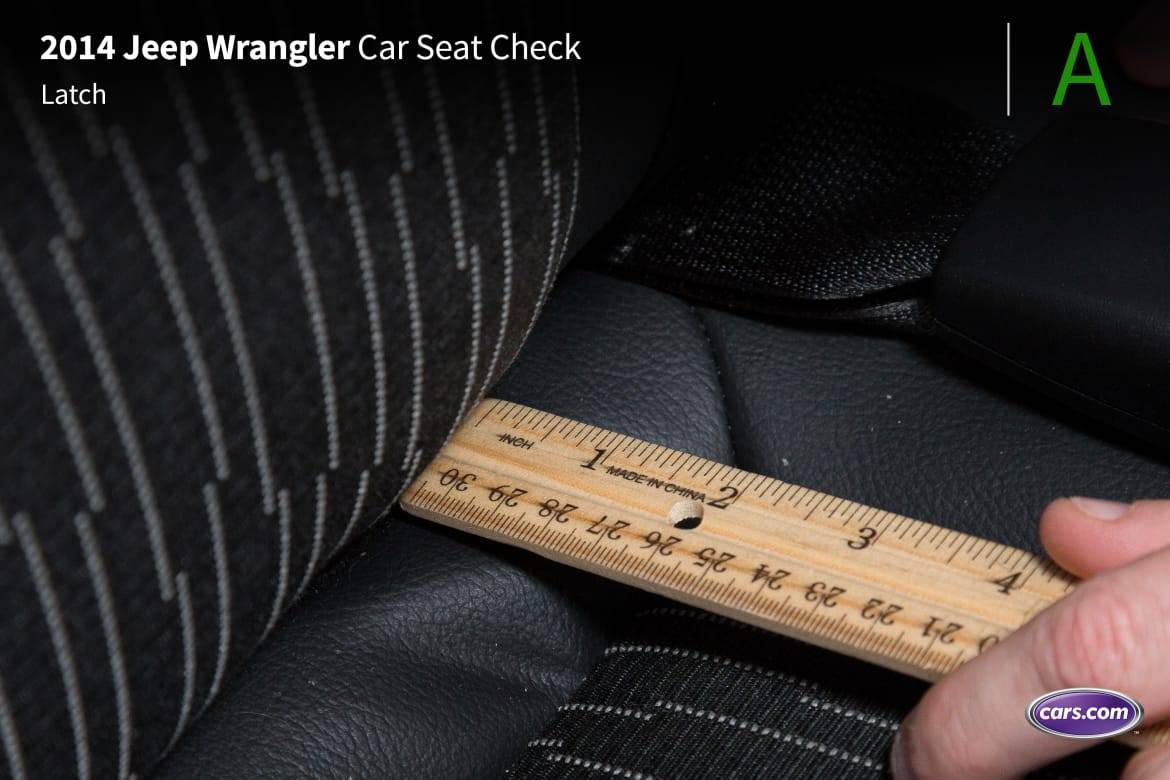
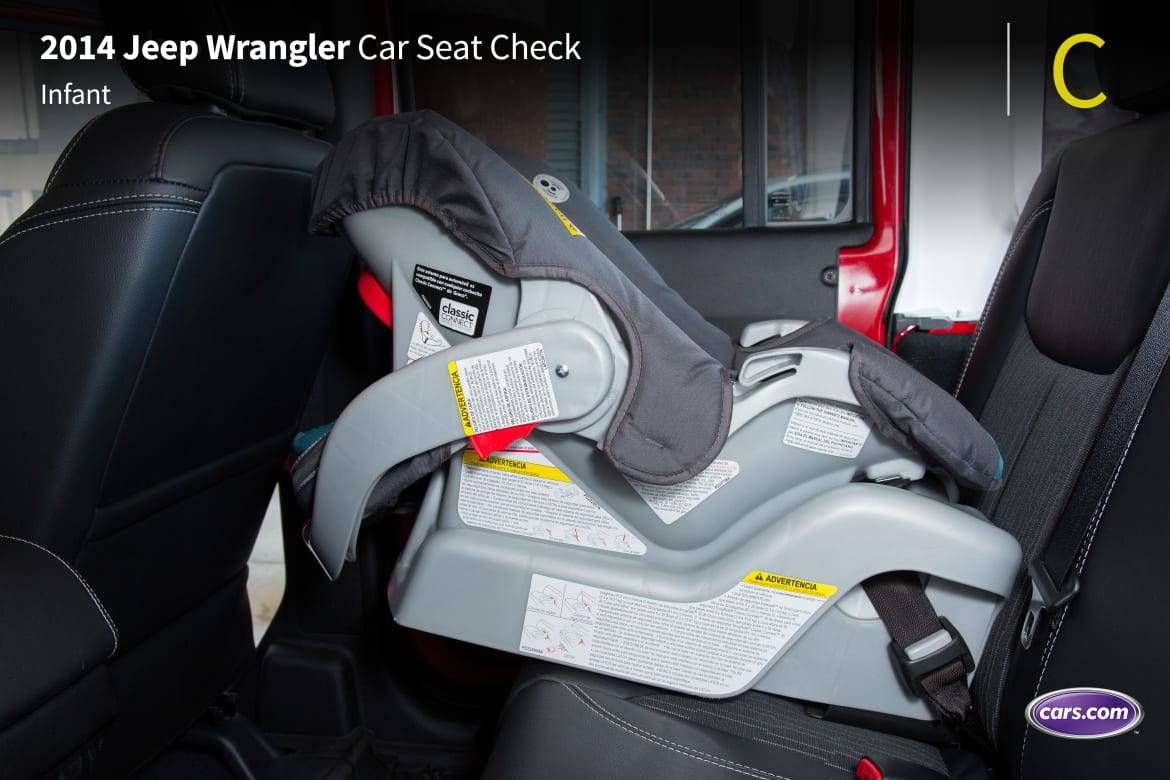
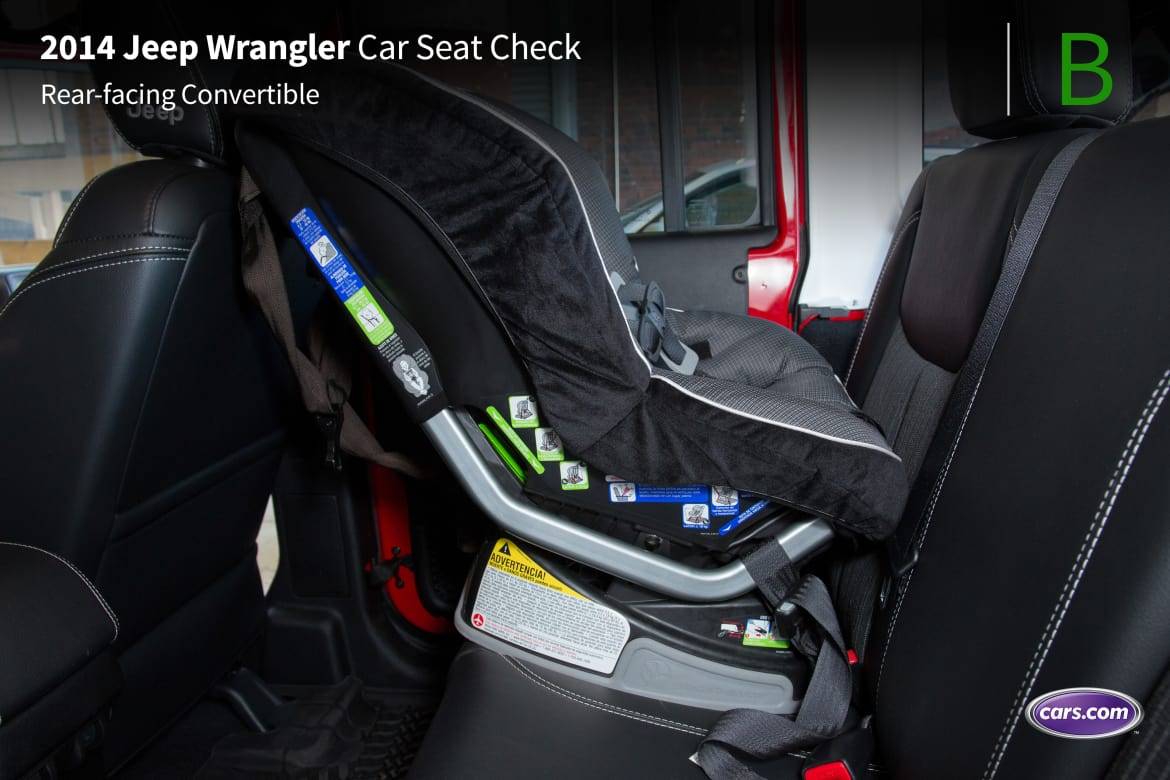
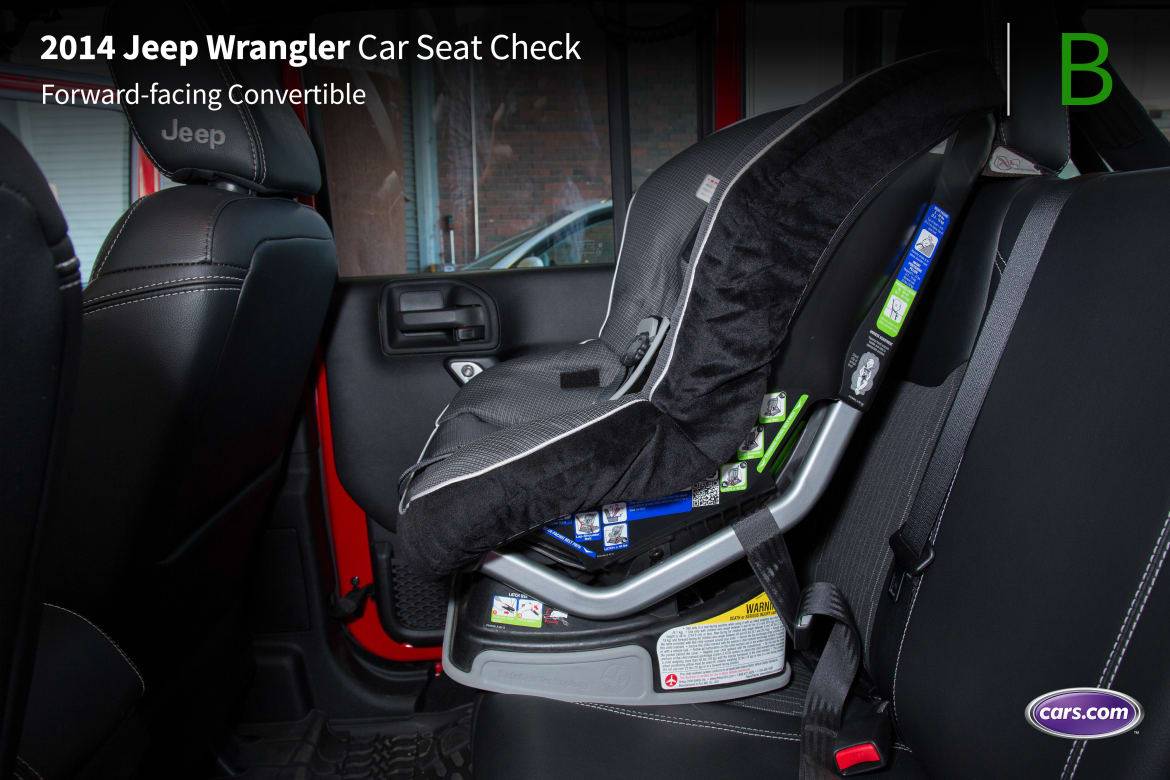
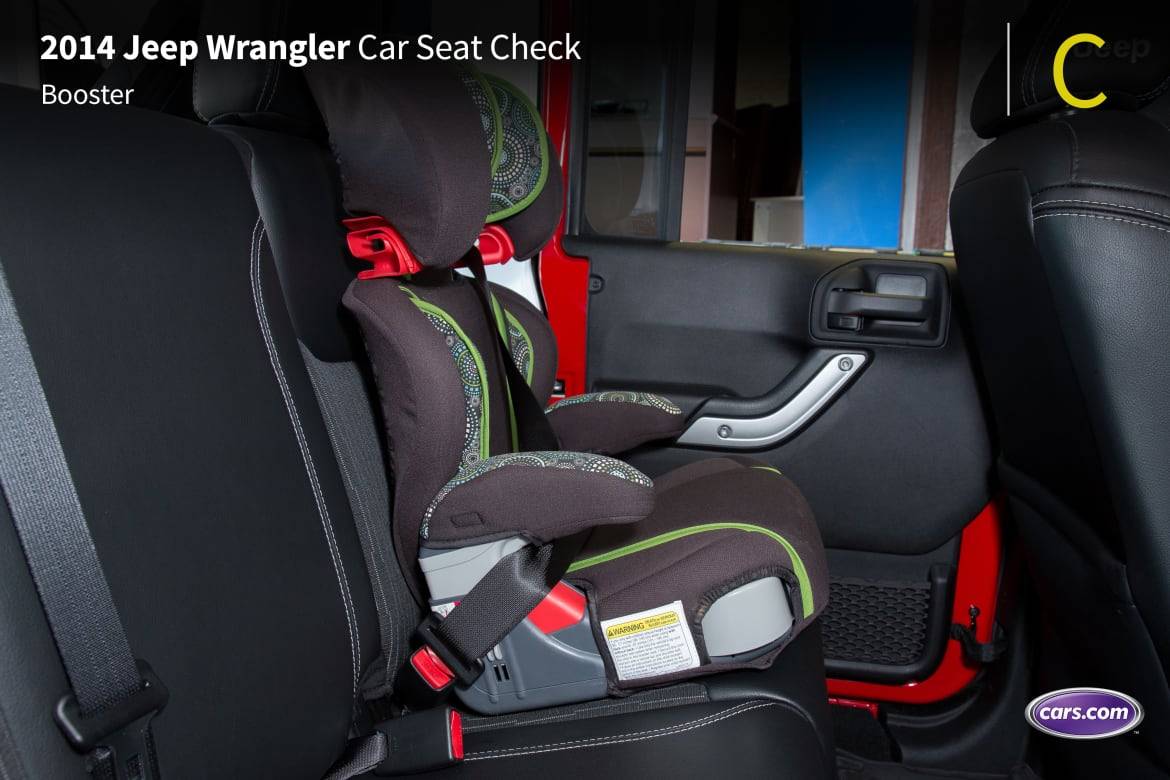





Grading Scale
A: Plenty of room for the car seat and the child; doesn’t impact driver or front-passenger legroom. Easy to find and connect to Latch and tether anchors. No fit issues involving head restraint or seat contouring. Easy access to the third row.
B: Plenty of room. One fit or connection issue. Some problems accessing third row when available.
C: Marginal room. Two fit or connection issues. Difficult to access third row when available.
D: Insufficient room. Two or more fit or connection issues.
F: Does not fit or is unsafe.
About Cars.com’s Car Seat Checks
Editors Jennifer Geiger, Jennifer Newman and Matt Schmitz are certified child safety seat installation technicians.
For the Car Seat Check, we use a Graco SnugRide Classic Connect 30 infant-safety seat, a Britax Marathon convertible seat and Graco TurboBooster seat. The front seats are adjusted for a 6-foot driver and a 5-foot-8 passenger. The three child seats are installed in the second row. The booster seat sits behind the driver’s seat, and the infant and convertible seats are installed behind the front passenger seat.
We also install the forward-facing convertible in the second row’s middle seat with the booster and infant seat in the outboard seats to see if three car seats will fit; a child sitting in the booster seat must be able to reach the seat belt buckle. If there’s a third row, we install the booster seat and a forward-facing convertible. To learn more about how we conduct our Car Seat Checks, go here.
Parents should also remember that they can use the Latch system or a seat belt to install a car seat, and that Latch anchors have a weight limit of 65 pounds, including the weight of the child and the weight of the seat itself.
Manufacturer image; Cars.com photos by Evan Sears

Editor-in-Chief Jennifer Newman is a journalist with more than 25 years of experience, including 15 years as an automotive journalist at Cars.com. Jennifer leads the Editorial team in its mission of helping car shoppers find the vehicle that best fits their life. A mom of two, she’s graduated from kids in car seats to teens behind the steering wheel. She’s also a certified car-seat technician with more than 12 years of experience, as well as member of the World Car Jury, Automotive Press Association and Midwest Automotive Media Association. LinkedIn: https://www.linkedin.com/in/jennilnewman/ Instagram: @jennilnewman
Featured stories
